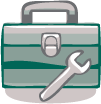1. Conduct, on an annual basis, quarterly fire and tornado drills and document the: a. Number of staff, b. Number of clients, c. Date of the drill, and d. Time the drill was initiated and completed,
2. Maintain fire and tornado drill documentation at the program for a period of 12 months,
3. Provide areas or rooms that afford privacy and are sufficient to accommodate the treatment services and activities stated in the program description such as individual or group counseling,
4. Provide adequately equipped, clean, well-maintained and ventilated client bathrooms that ensure privacy,
5. Provide client sleeping quarters that include individual beds that are:
a. In good repair,
b. Free of odors,
c. Free of stains,
d. Free of infestation, and
e. Equipped with clean bedding, such as pillow, linens, blanket or bedspread that are in good condition,
6. Dispose of medical waste in accordance with the guidelines of the Centers For Disease Control,
7. Keep chemicals a minimum of 6 inches off of the floor, 48 inches away from food, and 72 inches away from heat sources such as hot water heater pilot lights,
8. Keep working thermometers in refrigerators and freezers at all times, with refrigerators maintaining a temperature at or below 41 degrees Fahrenheit and frozen foods maintained in a frozen state, and
9. Ensure that foods which have been removed from the original container are a. Placed in a spill proof container, b. Labeled, c. Dated, and d. Stored no less than 24 inches off of the floor, and
10. Develop, implement, and comply with policies regarding animals on the premises.
|
1. Review and verify drill logs are complete with elements 1 a-d and are maintained for 12 months.
4 - 9. Tour facility and verify conditions of bathrooms, bedrooms, beds, red medical waste containers, chemical storage, refrigerators and freezers, working thermometers, and appropriate food storage.
10. Review of policy and procedure manual and verify compliance. |
|






